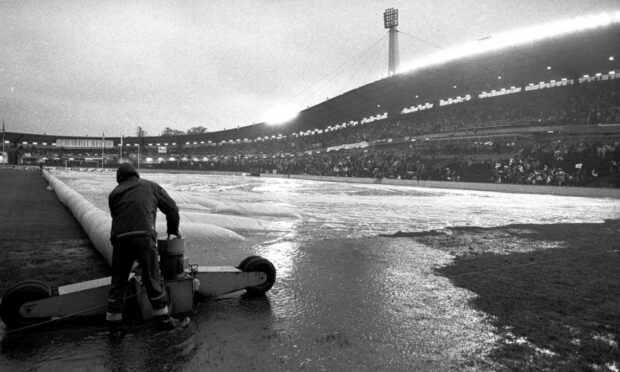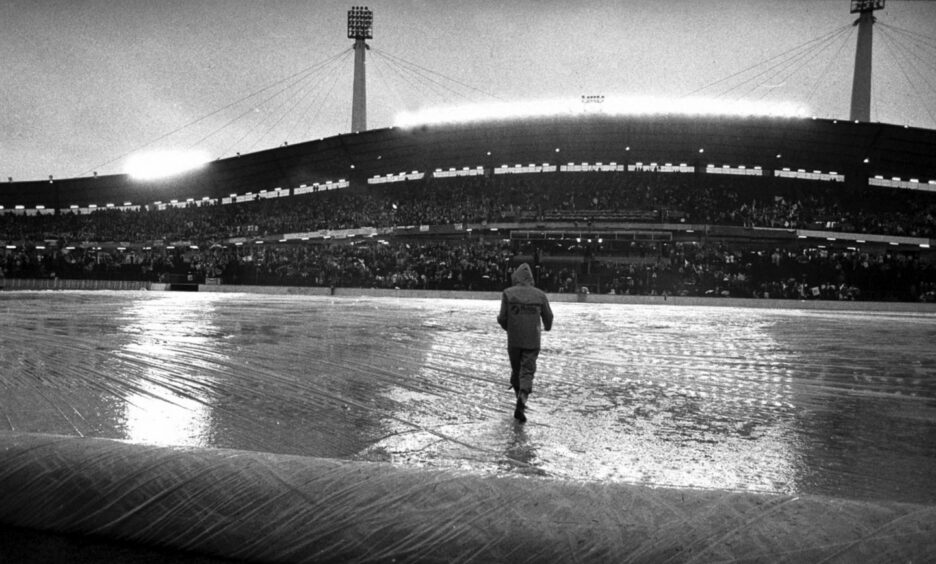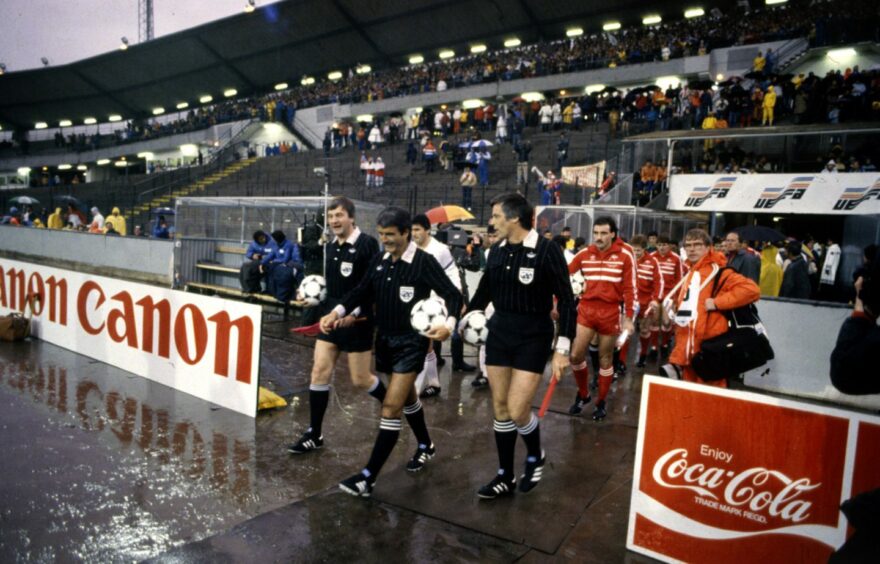Aberdeen made history 40 years ago in the Swedish city of Gothenburg when the Dons, led by footballing legend Sir Alex Ferguson, stunned Spanish giants Real Madrid to win the European Cup Winners’ Cup.
Thousands of hopeful Dons fans made their way to Sweden, to watch their team take part in their first European final. Hard tackles, tough conditions and an extra time winner, the final proved to be a spectacle fans would never forget.
As always, I’ll be asking the question of how did the referee and his team of officials get on?
The lucky man in the middle was experienced Italian referee Gianfranco Menegali. The 49-year-old whistler was in his last season as a referee. Due to celebrate his 50th birthday the following month, the European Cup Winners’ Cup final was the first major cup final of his career.
Born in Rome, Menegali studied and achieved a degree in Law. He won the Giovanni Mauro Award in the 1975-76 season, an award that is handed out to the best referee of the season in Italy.
Before the match had even begun, the referee was already having to make a tough decision. Heavy rain in Gothenburg was battering the pitch at the Ullevi Stadium. Tarpaulin had been laid in an attempt to protect the grass from the heavy downpours the pitch was being exposed to.
When conducting a pitch inspection there are several factors that need to be considered. The safety of the players is the most important factor considered by any match official. Could the pitch potentially cause injury?
Factors such as the distance a team or fans have to travel to get to the game also play a part in the decision to potentially postpone a match. This is obviously a lot harder to handle if the game is being played internationally. Teams and fans usually travel to the destination of the game days in advance.
The amount of pressure on the match officials to put on the game would have been immense. A European cup final being postponed due to rain? That would have been a disaster for everyone involved.
Watching footage of the game you can see just how much standing water there was on the pitch and the running track. The rain continued to fall throughout the duration of the match, making the conditions even worse.
The pitch was cutting up and the ball was holding up on the grass, which could be better described as mud in some places of the pitch. Once you start a game, it becomes increasingly difficult to abandon it. Nine times out of 10 you power through to get the game finished and I do think playing the game was the right decision.
The fact it was a cup final between two teams who had collectively travelled over a thousand miles obviously played a huge part in the decision.
Enough was done to make the pitch just about playable, I do, however, think the consideration of player safety was thrown out of the window in order to get the game played.
If the tarpaulin cover had not been put over the pitch, I doubt the game would have started. Although the pitch was playable, it wouldn’t stop it from having an impact on the game.
Was the penalty decision correct?
After the Dons had taken the lead through Eric Black, Real Madrid were awarded an opportunity to get themselves back into the game. An Alex McLeish pass-back would fall short, influenced by the muddy penalty box. Jim Leighton would charge out of his net and take down Real Madrid forward Santillana.
In the 1980s, refereeing and football was in a completely different era compared to the styles and decisions we see now.
However, this challenge is still something we see consistently in the beautiful game today.
A player waiting, expecting the contact to come. Buying and selling that contact to win a penalty. I think it was a penalty, one that would still be given today even with VAR.
There will always be arguments between whether going down when expecting contact is “clever play” or “cheating”. There most certainly is a very fine line between the two. But, in this situation it was clever play.
The match had plenty of hard challenges, mainly due to the poor weather conditions. The referee awarded some soft fouls as well throughout the game.
There was some inconsistency in the decisions he was giving. There were some challenges from both sets of players that would easily be yellow cards now.
There were also plenty of occasions where the referee would lag behind play a bit, he certainly wasn’t the most mobile referee I’ve seen. Overall, I thought the referee had a reasonable game. Nothing too controversial but slightly inconsistent.
Finlay Elder has been a registered referee for six years and a category 5 official since 2019, with experience in the Highland League, juniors and Club Academy. He writes a regular column on refereeing for The Press and Journal.



Conversation